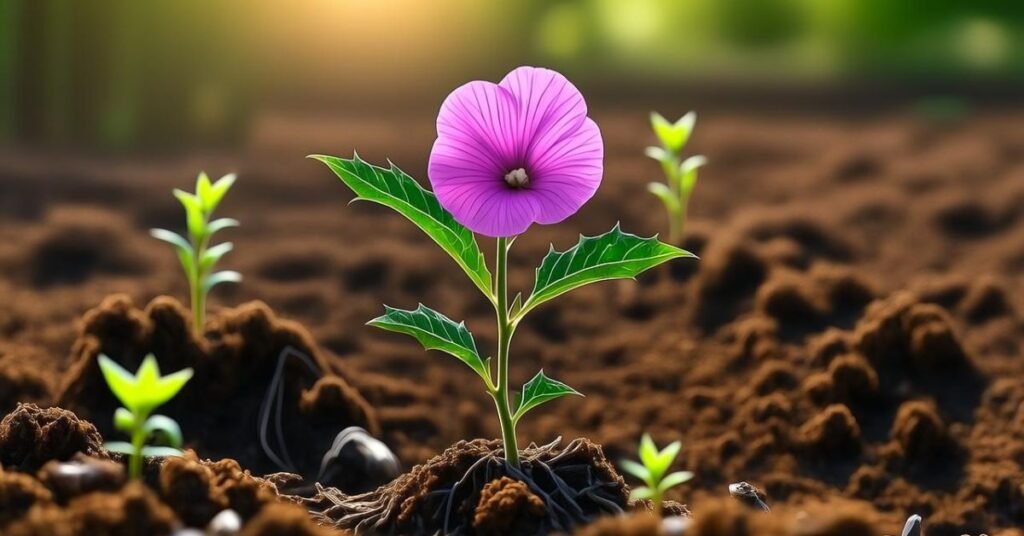Introduction
Perennial plant purple flowers are long lasting plants that return year after year. They have vibrant purple blooms that add beauty to gardens. These plants are hardy and can thrive in different climates. Once planted, they grow back each season with little effort.
Imagine stepping into your garden and seeing a burst of purple all season long. These flowers bring charm, elegance, and a pop of color. They can make your outdoor space look fresh and lively. Their continuous bloom means you enjoy their beauty for months without replanting.
There are many types of perennial purple flowers to choose from. Some are perfect for sunny spots, while others love partial shade. With the right care, they can bloom from spring to fall. They are ideal for borders, flower beds, and even containers.
Grow Perennial Plant Purple Flowers
Perennial plant purple flowers are easy to grow with the right care. Choose a sunny spot with well drained soil. Plant them during spring or early fall for better root growth. Water them regularly but avoid waterlogging. Use compost to enrich the soil. Plants will grow stronger and healthier this way.

Give your perennial purple flowers enough space to spread. Remove weeds to avoid competition for nutrients. To encourage new growth, prune them after they bloom. Protect them from pests by checking leaves often. With simple care, they will return every year with vibrant purple blooms.
Low Maintenance Purple Flowers
Low maintenance perennial plant purple flowers are ideal for busy gardeners. They need little attention to thrive. Most grow well in sunlight and average soil. Once established, they return every year with fresh blooms. Their purple shades bring charm to any garden space.
These plants require minimal watering and pruning. In addition, they are resistant to a wide range of pests and diseases. Varieties like lavender, salvia, and catmint are popular choices. They add beauty while attracting butterflies and bees. With simple care, they keep gardens colorful all season.
Best Soil and Sunlight
Perennial purple flowers grow best in well drained soil. Rich, fertile soil helps them produce vibrant blooms. Adding compost improves growth. Avoid heavy clay soil that holds too much water. Good soil ensures strong roots and long lasting flowers.

These flowers also need proper sunlight. Most varieties thrive in full sun for at least 6 hours daily. Some can grow in partial shade. Sunlight affects bloom size and color. Here are the key points:
- Well drained soil is essential.
- Add compost or organic matter for better growth.
- Avoid overly wet or clay heavy soil.
- Provide at least 6 hours of sunlight daily.
- Partial shade works for some varieties.
Perennial Purple Flowers for Attracting Bees and Butterflies
Perennial plant purple flowers are great for attracting bees and butterflies. Their bright colors and sweet nectar draw pollinators easily. Many varieties bloom for long periods, giving food for insects throughout the season. Planting them creates a lively and healthy garden.
These flowers not only look beautiful but also support nature. Bees help with pollination, and butterflies add beauty to the garden. Choosing the right varieties makes a big difference. Here are some tips:
- Select nectar rich purple flower varieties.
- Plant in sunny spots for better blooms.
- Mix different bloom times for a steady food source.
- Avoid pesticides that harm pollinators.
- Use lavender, salvia, or verbena for best results.
Top Varieties of Perennial Plant Purple Flowers
Perennial plant purple flowers come in many beautiful varieties. Some bloom in spring, while others last until late fall. Choosing the right mix gives you color all year. These plants also add texture and fragrance to the garden.
Different varieties have different needs and bloom times. Planting a mix ensures your garden stays vibrant in every season. Below is a table of popular choices:
| Variety | Bloom Season | Special Features |
| Lavender | Summer to Early Fall | Fragrant, attracts pollinators |
| Salvia | Late Spring to Fall | Long lasting blooms, hardy |
| Catmint | Late Spring to Summer | Drought tolerant, low maintenance |
| Verbena | Summer to Frost | Continuous blooms, colorful |
| Allium | Late Spring | Unique globe shaped flowers |
Perennial Plant Purple Flowers for Borders and Landscaping
Perennial plant purple flowers are perfect for borders and landscaping. Their rich colors create a striking edge for garden paths. They blend well with other plants and add depth to designs. Many varieties grow in neat shapes, making them ideal for framing spaces. With little care, they return each year, keeping the garden beautiful and vibrant.
Problems in Perennial Plant Purple Flowers and Solutions
Perennial plant purple flowers can face some common problems. Pests like aphids and spider mites can damage leaves and blooms. Fungal diseases may cause wilting or spots. Poor soil or too much water can weaken roots. These issues can reduce flowering and affect plant health.
With proper care, most problems can be solved easily. Regular inspection helps catch issues early. Using natural pest control keeps plants safe. Good drainage and sunlight prevent many diseases. Most problems can be solved easily. Regular inspection helps catch issues early. Using natural pest control keeps plants safe. Good drainage and sunlight prevent many diseases. The following table lists common problems and their solutions:
| Problem | Cause | Solution |
| Aphid Infestation | Insects feeding on plant sap | Spray with neem oil or insecticidal soap |
| Fungal Leaf Spots | Excess moisture on leaves | Improve air circulation, avoid overhead watering |
| Root Rot | Overwatering, poor drainage | Use well drained soil, reduce watering |
| Weak Blooming | Lack of sunlight or nutrients | Add compost, ensure at least 6 hours of sun |
| Spider Mites | Hot, dry conditions | Mist leaves regularly, use miticide |
Purple Flowers That Brighten Your Garden

Perennial plant purple flowers add charm and elegance to any garden. Their rich colors stand out in flower beds and borders. They bloom year after year with minimal care. Many varieties have sweet scents that fill the air. These flowers also attract bees and butterflies, bringing life to your garden.
Care for Perennial Plant Purple Flowers
Perennial plant purple flowers can grow in many climates with the right care. In warm areas, they need regular watering during dry seasons. In colder regions, mulch helps protect roots from frost. Choosing hardy varieties ensures better survival in extreme conditions.
Good care keeps these plants healthy year after year. Adjusting watering and sunlight needs is important for each season. Here are some care tips:
- Water deeply during hot, dry weather.
- Mulch in winter to protect roots from freezing.
- Choose drought tolerant varieties for hot climates.
- Give partial shade in extreme heat.
- Prune after flowering to encourage new growth.
Conclusion
Perennial plant purple flowers bring beauty, color, and life to any garden. They are easy to grow, long lasting, and return year after year. With the right care, they thrive in different climates and conditions. Their vibrant blooms attract pollinators and enhance garden designs. Planting them is a simple way to enjoy nature’s beauty in every season.
FAQs
1. How often should I water perennial plant purple flowers?
Water them once or twice a week, depending on the weather and soil type.
2. Do perennial plant purple flowers need full sun?
Most varieties need at least 6 hours of sunlight daily for best blooms.
3. Can perennial plant purple flowers survive winter?
Yes, many varieties can survive winter if protected with mulch.
4. What soil is best for perennial plant purple flowers?
Well drained, fertile soil enriched with compost works best.5. Are bees and butterflies attracted to purple flowers on perennial plants?
Pollinators are naturally attracted to their bright blooms and nectar.


